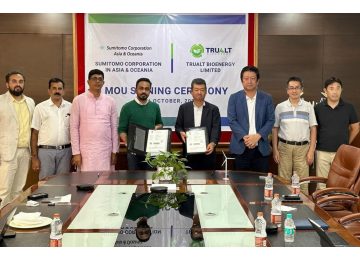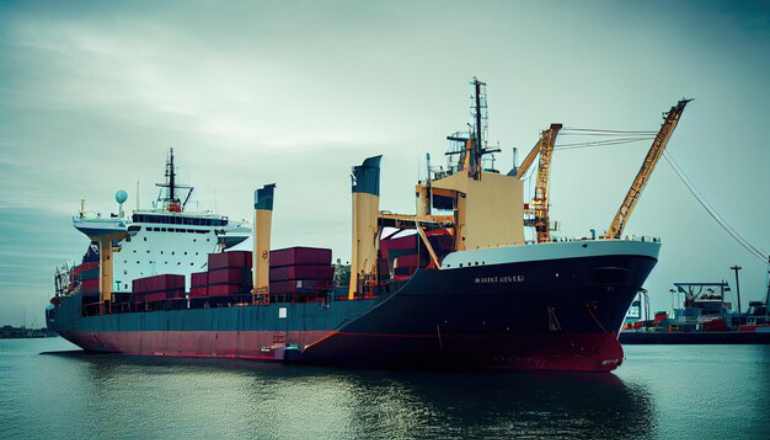The total cost of ownership for zero-emission trucks is significantly higher than for internal combustion engine vehicles of zero-emission trucks.
Closing this gap could significantly boost the transition to zero-emission truck fleets, says a new report on `Can zero-emission trucks become viable—and what will it take to boost adoption?’ from McKinsey & Company.
McKinsey’s survey of 200 US trucking fleets revealed that despite two-thirds committed to decarbonization and half piloting zero-emission vehicles (ZEVs), less than 10% see a viable path for scaling adoption. Trucking, the second largest US greenhouse gas emitter, is a significant contributor to emissions, prompting a pressing need to transition to zero-emission vehicles.
Challenges:
Despite decarbonization targets, there is uncertainty regarding the scalability and timely adoption of zero-emission trucks.
Fleet operators face a persistent challenge in transitioning to electric vehicles, as the total cost of ownership (TCO) gap for ICE vehicles running on diesel is between 30 and 50 percent.
Scaling ZEV models faces challenges like low uptime rates, underdeveloped charging and depot infrastructure, and operational complexity, despite improvements in available models.
The value chain:
Closing the TCO gap is crucial for accelerating ZEV adoption, with opportunities for fleet operators, OEMs, and ecosystem partners to work together towards a zero-emissions future.
Truck OEMs can reduce product costs and scale their offerings in the US market, thereby enhancing their competitiveness with global competitors.
Fleet operators can consider evolving their ZEV adoption approach from plug-and-play to operations tailored toward optimizing the unique capabilities ZEV assets can deliver compared to ICE vehicles.
Service providers, beyond OEMs and fleet operators, play an important role in reinforcing an ecosystem that supports zero-emission truck adoption at scale. This may include supplying the required charging or fuel infrastructure along freight corridors and developing innovative financing offerings.
The TCO calculator:
TCO parity is crucial for the ZEV transition, but fleets struggle to achieve it. Heavy-duty trucking often experiences 50 percent higher TCOs due to varying truck archetypes and use cases.
Local distributors, despite their low daily mileage and predictable routes, struggle to amortize higher zero-emission truck costs, potentially requiring increased utilization and daily mileage to achieve TCO parity.
According to McKinsey, battery electric vehicles are uneconomical for truck applications, while full-haul full truckload (FTL) networks have high utilization but less predictable schedules and limited charging time. Public fast-charging stations add uncertainty and cost advantages. To parity, FTL fleets should tailor charging schedules, form partnerships, develop electrified freight corridors, and reduce on-route charging costs.
Truck OEMs can reduce upfront vehicle costs for fleet operators aiming for TCO parity by improving strategic design, technology, and operational excellence. McKinsey suggests that by implementing battery pack sourcing, manufacturing process improvements, economies of scale, and warranty and support reduction, OEMs can achieve an up-front cost reduction of approximately $150,000, aligning with cost reduction in light vehicles or passenger cars.
Tech-led:
Battery pack sourcing and design can lead to cost savings of up to $60,000. In-sourcing battery cell production can also qualify for battery tax credits.
Switching from high-cost nickel manganese cobalt (NMC) to cheaper lithium iron phosphate (LFP) cells could lead to cost savings. Implementing cell pack design improvements, such as a cell-to-body architecture approach and manufacturing efficiency designs, could enhance incremental value. Chinese OEMs are increasingly adopting these approaches in the passenger car market.
Engineering optimization in e-powertrain production and manufacturing efficiency could lead to up to $30,000 in cost savings through innovative techniques and automation. It can also reduce energy costs.
Production and warranty:
Increased vehicle production could save up to $30,000 annually through operational excellence, supplier economies, and platform-specific development costs like engineering and research and development.
BEV products’ steady state could reduce warranty accrual rates, potentially reclaiming $20,000-$30,000 of margin by matching historical ICE levels, as OEMs transition from prototype-like models to higher-reliability designs.
The cost of battery-electric vehicles could potentially decrease by over 30%, thereby bridging the total cost-of-ownership gap.
For example, US truck OEMs can innovate in operational efficiency and product cost by utilizing Chinese OEMs’ access to Chinese-made LFP cells and vertical integration, which reduces battery costs and improves efficiency, while maintaining relevance in the market.
Some parameters:
OEMs are reducing vehicle costs, but fleet operators must shift the TCO balance by optimizing operations for zero-emission powertrains. A core set of optimization enablers can apply across fleets.
McKinsey identified 24 parameters affecting TCO across fleet models, with fleets directly influencing 13 and 11 external market parameters like electricity, temperature, diesel, gas prices, and subsidies.
The 13 parameters significantly impact TCO, maximizing vehicle dwell time and minimizing truck numbers, reducing capital expenditure, and lowering energy costs.
Optimizing operating parameters can help maintain optimal usage, ensuring the vehicle’s optimal charging schedules and efficient usage of charging facilities.
Fleet operators may need to re-architect their ICE truck operations to prepare for the ZEV transition, potentially reducing haul length or increasing utilization through additional shifts.
For example, last-mile parcel delivery vehicles achieve TCO parity due to their fleet’s optimal operating parameters, suitable for EVs with moderate daily mileage and long off-peak charging periods, and ideal for regenerative braking during city trips.
Dry van long-haul networks face challenges in achieving TCO parity due to less route predictability, heavier payloads, and a lack of charging stations. Challenges in these use cases could provide a competitive advantage.
TCO optimization:
Optimizing fleet operating parameters near total-cost-of-ownership parity can reduce TCO by 5-25% in distribution heavy-duty trucking fleets. Increased daily mileage could increase asset utilization, but must balance with other interdependencies like demand charges and grid upgrade costs.
The transition to zero-emission vehicles requires an extended ecosystem of industry stakeholders, including fleets and OEMs. Cooperation among existing stakeholders is crucial, with e-fleet corridors and fleet ownership innovation being key enablers.
Electrified fleet corridors with reliable charging may encourage EV adoption, but US public charging infrastructure presents challenges due to fleet inability to justify on-route charging and high prices for depot charging.
Solutions:
A consortium of US truck fleets, a charging solution provider, and an infrastructure investor could collaborate to address long-haul fleet electrification. The consortium would ensure minimum utilization of on-route chargers, competitive charging rates, and guaranteed uptime. An infrastructure investor could underwrite investments in fast chargers, grid upgrades, and ancillary infrastructure. A system orchestrator could plan infrastructure deployment along common freight routes.
The consortium model of on-route charging could lead to a 15-20% TCO reduction for HDT electric fleets, potentially accelerating TCO parity to around 2026, especially if daily driving distances exceed 125,000 miles per year or 400 miles per day, compared to early 2030s public charging.
ZEV operations require capital expenditure-intensive infrastructure and grid upgrades, costing up to a few hundred thousand dollars per charger and a couple of million dollars per depot. However, fleets can tap into $50 billion in available capital for green investments, as the top ten core-plus infrastructure funds collectively hold this capital. Collaborating with OEMs can mitigate residual vehicle value risk.
Innovative financing is crucial for electrifying third-party logistics (3PL) or for-hire fleets, which account for 86% of US truck ton-miles. Accelerating 3PL ZEV adoption could involve a collaborative effort between investors, OEMs, fleets, and 3PLs to “buy out” diesel truck ownership and replace it with a lease-like model for ZEVs. OEM-led truck-as-a-service (TaaS) could support fleets transitioning to electric medium-duty trucks.
Conclusion:
ICE trucks’ cost parity could accelerate US mass ZEV adoption, requiring a final push to close the TCO gap. Collaboration among fleet operators, OEMs, and ecosystem players could unlock global competitiveness and inspire decarbonization business models.











